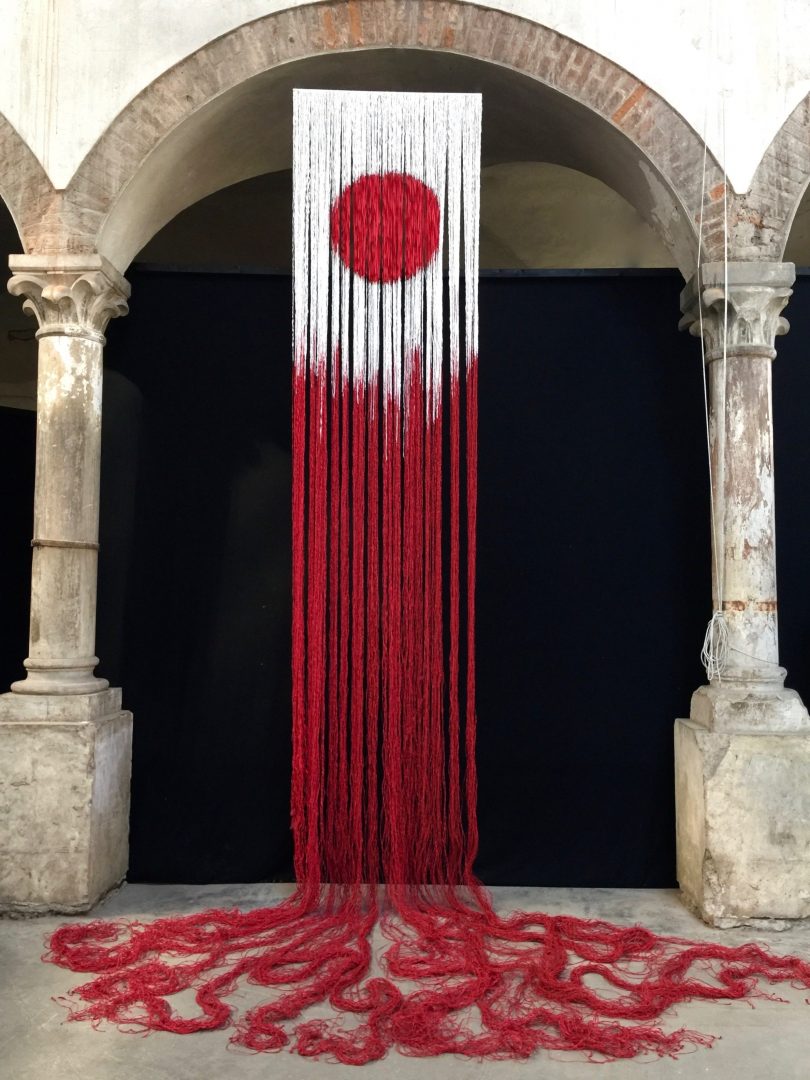The Open Call for the Social Art Award 2019 under the topic “We are the People – Peaceful Revolutions” was closed on December 15, 2019. We are very impressed by 558 submissions that were contributed by artists coming from 65 countries across all continents.
The winners of The Social Art Award 2019 are Narcissa Gold (USA), Melinda Mouzannar (Lebanon) and Bogna Grazyna Jaroslawski (Poland/Germany). The Honorary Mention goes to Kingson Kin Sing Chan (Hong Kong/UK).
Below you find the artworks, that passed the initial jury round. The public voting took place till 30 December and is a tool to give more public visibility to the topic and the artworks. It does not replace the final jury judgment. There were two wildcards for the most voted artworks that entered the final shortlist.
The focus diversity of applications shows that artists are active in the multi-faceted fields of socially engaged art reflecting on wars, genocides, femicides, traumata, violence against refugees, children, women, men, disabled people, LGBTIQs, animals. They share feelings for the planet and its living species, but also showing hopelessness due to complex crises be it climate change (e.g. in regard to water pollution), capitalism, corruption, a violation against human rights, nature, protected national parks. Many of the artists are constantly trying to give a voice to the poorest or empower unheard social groups.
It’s not only about peaceful revolutions, but it’s also about feeling a deep connection and showing love and respect for each other.
Thank you all for sharing your great and inspirational work and look at all the great contributions!
Ewiges Strahlen, Radiate Eternal
Marie Schirrmacher-Meitz
open category
Eternal Radiance / Radiate Eternal An appeal against forgetting The reactor accident on March 11, 2011, as a result of an earthquake in Tohoku / Japan with a magnitude of 9.0, was the fourth worst ever measured. This was followed by a devastating tsunami with gigantic waves that hit the Japanese northeast coast about 40 minutes after the quake. Over 19,000 people died. On top of that. The biggest misfortune on this day is the destruction of the reactors of the Fukushima Daiichi nuclear power plant. This nuclear disaster has fundamentally shaken confidence in nuclear energy worldwide. However, there is still suspicion that those responsible in Japan are hiding the actual chaos and the consequences of the disaster. In my installation, the rising sun mutates into the setting sun in memory of the reactor accident in Fukushima. Their purity and honesty is questioned by the threads, which seem to slowly absorb red color. The current energy supply systems have not been rethought worldwide, even after the accident. So far, no social impact or change has been shown. Instead, a supposed silence has returned to the world press in recent years. We have become deaf to the consequences of this world catastrophe, which we cannot yet understand in its entirety. We turn away and look for peace outside and in our heads. This silence makes us dull. In my installation, the appeal against forgetting is important to me. It should be a call that we humans stand for a right to the future.
Eternal Radiance / Radiate Eternal An appeal against forgetting The reactor accident on March 11, 2011, as a result of an earthquake in Tohoku / Japan with a magnitude of 9.0, was the fourth worst ever measured. This was followed by a devastating tsunami with gigantic waves that hit the Japanese northeast coast about 40 minutes after the quake. Over 19,000 people died. On top of that. The biggest misfortune on this day is the destruction of the reactors of the Fukushima Daiichi nuclear power plant. This nuclear disaster has fundamentally shaken confidence in nuclear energy worldwide. However, there is still suspicion that those responsible in Japan are hiding the actual chaos and the consequences of the disaster. In my installation, the rising sun mutates into the setting sun in memory of the reactor accident in Fukushima. Their purity and honesty is questioned by the threads, which seem to slowly absorb red color. The current energy supply systems have not been rethought worldwide, even after the accident. So far, no social impact or change has been shown. Instead, a supposed silence has returned to the world press in recent years. We have become deaf to the consequences of this world catastrophe, which we cannot yet understand in its entirety. We turn away and look for peace outside and in our heads. This silence makes us dull. In my installation, the appeal against forgetting is important to me. It should be a call that we humans stand for a right to the future.



